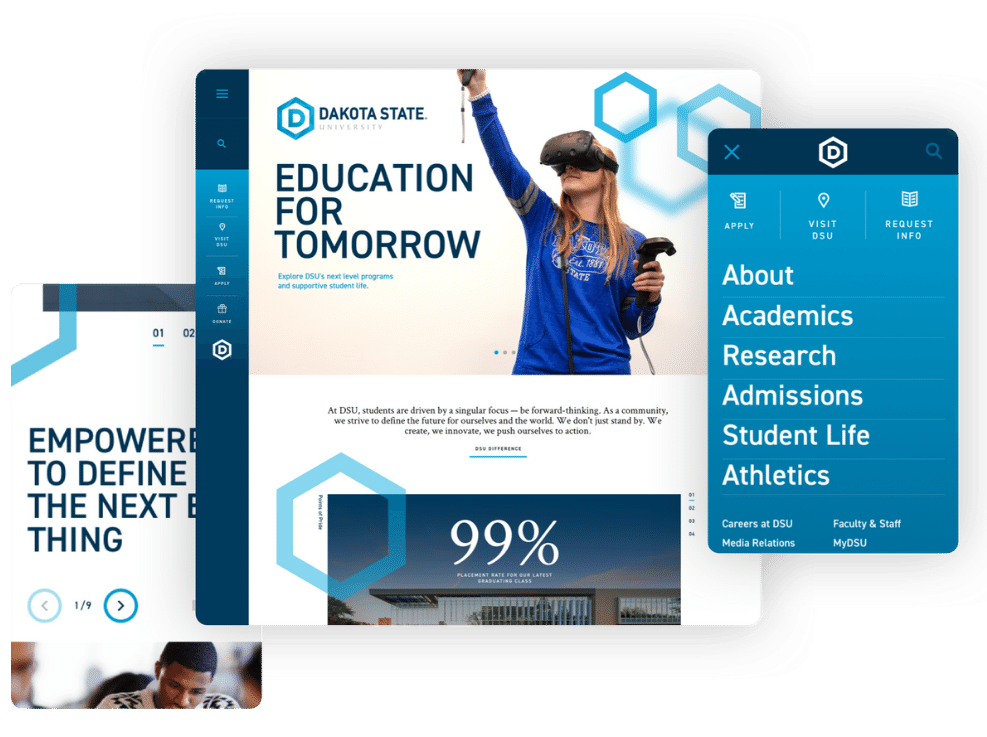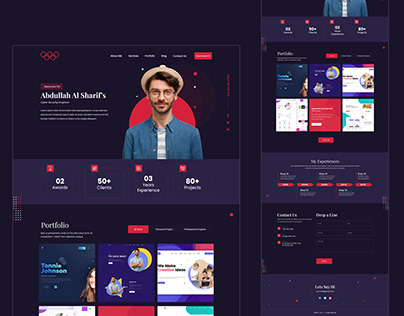Website Design in copyright: Building Mobile-Friendly Websites for Modern Audiences
Website Design in copyright: Building Mobile-Friendly Websites for Modern Audiences
Blog Article
Important Tips for Crafting High-Impact Website Styles
In the world of electronic advertising, the style of an internet site offers as an important touchpoint for engaging prospective customers. To create high-impact website layouts, one must think about vital elements such as target market understanding, individual experience, and aesthetic pecking order.
Understand Your Target Market
Recognizing your target market is basic to efficient internet site style. A site that resonates with its visitors is typically the result of comprehensive research and insights right into user choices, demographics, and behaviors. Identifying target customers permits designers to customize material, visuals, and performances that fulfill their specific needs, boosting interaction and complete satisfaction.
To successfully understand your audience, start by conducting demographic evaluations to collect information on age, gender, place, and rate of interests. This information functions as a foundation for creating user personalities, which represent the essential characteristics of your target market. These characters overview decision-making in layout components and web content approach, ensuring positioning with customer expectations.
Furthermore, examining user habits with tools like Google Analytics can disclose exactly how visitors connect with your site. Metrics such as bounce prices and time on web page can highlight areas that require improvement or change. Individual surveys and comments also give very useful insights right into preferences and discomfort points.
Inevitably, a deep understanding of your audience is not just useful but necessary. It empowers developers to create more appropriate, appealing, and practical websites that promote a favorable user experience and drive wanted outcomes.
Prioritize Customer Experience
When designing an internet site, focusing on individual experience (UX) is critical to attaining both customer contentment and company purposes. A well-crafted UX guarantees that site visitors can browse the site effortlessly, discover the information they require, and engage with content successfully. To achieve this, it is vital to take on a user-centered style method that includes understanding user needs, preferences, and behaviors.
Start by conducting comprehensive study, consisting of customer studies and functionality testing, to gather insights into just how individuals connect with your website. This data ought to notify design decisions, ensuring that formats and functions align with user expectations. Structured navigating is crucial; site visitors need to have the ability to locate details swiftly without unneeded clicks or complication.

Finally, guarantee that your site is available to all customers, consisting of those with disabilities. Following ease of access standards not only broadens your audience however also cultivates inclusivity. By prioritizing UX, you lay the structure for an effective website that satisfies both customer needs and organization objectives.
Embrace Visual Pecking Order
A well-structured visual pecking order plays a considerable function in enhancing customer experience by directing visitors' attention to one of the most essential elements of a web site. By strategically organizing content, developers can develop a clear course for users to follow, ensuring they engage with essential info properly.

In addition, the positioning of elements on the web page is essential. Leading the visitor's look via the format can be attained by positioning vital details on top or in the center, where individuals typically start their visual journey. Incorporating whitespace around elements can additionally improve quality, making it much easier for users to pop over to this web-site process details without feeling overwhelmed.
Lastly, using typography successfully adds to visual hierarchy. Various font designs, weights, and dimensions can represent value, guiding users with the content seamlessly. By accepting these concepts, designers can produce an instinctive experience that promotes engagement and encourages customers to explore even more.
Enhance for Mobile
Mobile optimization is vital in today's digital landscape, as a significant section of internet website traffic comes from mobile devices. To guarantee a seamless individual experience, sites have to be created with mobile users in mind. This includes employing receptive website design methods that adapt the layout, pictures, and message to fit numerous screen Going Here sizes while keeping capability and aesthetic appeals.
First, focus on filling speed, as mobile users typically operate slower networks. Optimize pictures and reduce code to enhance efficiency. Additionally, navigating ought to be instinctive; think about applying a simplified menu that permits easy access to crucial pages without overwhelming individuals.
Touch targets, such as links and buttons, should be suitably sized, ensuring they are conveniently tappable without mistakes. Additionally, ensure that forms are mobile-friendly by minimizing input areas and making use of dropdowns where suitable, enhancing the user experience.
Finally, examination your site throughout various mobile phones and browsers to determine any problems that might impact usability. By prioritizing mobile optimization, you not just improve customer complete satisfaction but likewise positively affect your website's internet search engine ranking, thus drawing in even more site visitors and enhancing overall interaction.
Implement Solid Branding
Producing a well-known and natural brand is basic to developing a strong on the internet presence. A distinct brand name not just distinguishes you from competitors but likewise fosters trust and loyalty amongst your audience. To implement solid special info branding, begin by establishing a clear brand name identity that encapsulates your goal, values, and vision - website design copyright. This identification ought to be reflected continually across all digital touchpoints, including your website, social networks, and e-mail communications.
Visual aspects such as logo designs, color systems, and typography play an essential role in branding. Choose a color combination that resonates with your target market and shows your brand character. Make sure that your logo is functional and prominently displayed on your site, enhancing brand acknowledgment.
Web content is just as vital; your tone of voice need to straighten with your brand name identification, whether it's professional, pleasant, or reliable. Engaging storytelling can additionally enhance your brand name, developing a psychological link with users.
Verdict
In verdict, crafting high-impact web site layouts requires a complex approach that encompasses recognizing the audience, focusing on customer experience, and embracing visual pecking order. By integrating these elements, internet sites can efficiently involve individuals, facilitate smooth navigation, and foster psychological connections that improve brand identification.
To produce high-impact website designs, one have to think about essential aspects such as target market understanding, user experience, and visual power structure.When creating a website, focusing on user experience (UX) is extremely important to achieving both customer contentment and business purposes.Start by conducting comprehensive research, consisting of user studies and functionality testing, to collect understandings into exactly how customers connect with your site. To make certain a seamless user experience, websites should be made with mobile customers in mind.In final thought, crafting high-impact site designs demands a multifaceted technique that encompasses understanding the audience, focusing on individual experience, and embracing aesthetic power structure.
Report this page